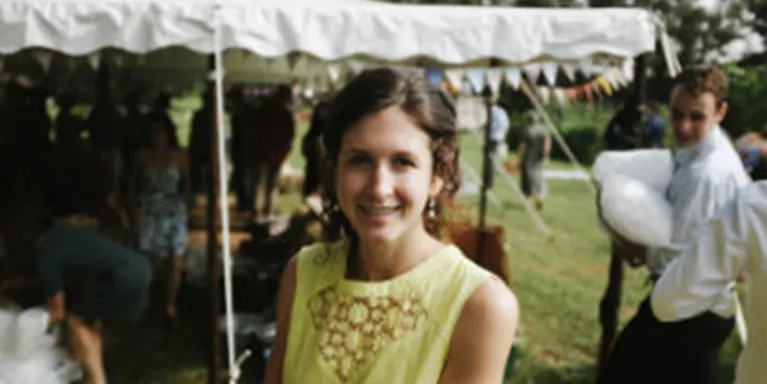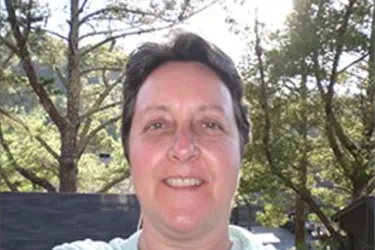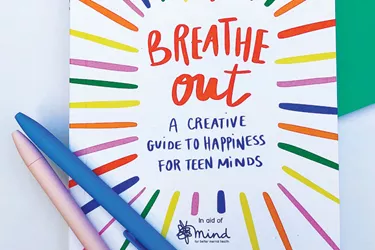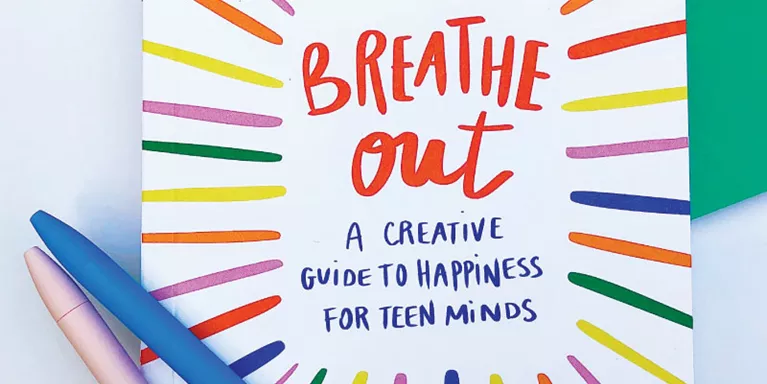A diary of mindfulness, week four - staying present
In the fourth in her series on mindfulness and depression, Clare blogs about staying present and identifying negative thoughts for what they are.
I've been writing a diary of my experiences of an eight week Mindfulness Based Cognitive Therapy course. You can see a list of the themes for the weeks, and a link to weeks one to three here.
< Read about week three 'mindfulness of the breath' or Read about week five 'allowing and letting be' >
Week four - staying present
Over the last week, I have been noticing and recording pleasant and unpleasant events as part of my homework for the course. Like before, I had to try and record the event itself, my bodily sensations, my emotions and my thoughts.
One of the things I found most interesting about recording unpleasant events was how the leader of the course had explained that we didn’t have to have ‘totally dreadful’ unpleasant experiences. Some of the experiences we record could be only ‘mildly unpleasant’ or even quite neutral.
I realised that pleasant and unpleasant events and experiences could be on a much more subtle scale than language enables us to describe. By taking time to become more aware of an unpleasant event and all the sensations and thoughts that came with it as it happened, I felt I was further getting to know my own mind.
I also found doing the breathing space three minute meditations three times a day really refreshing. It felt a bit like a ‘reset’ button, enabling me to step out of whatever was going on at the time. The instructor gave us a great metaphor for what the breathing space can do. Imagine we’re caught in a downfall of rain. Many of us will rush for shelter. We’re glad to be out of the rain for a moment - we hope it will stop so we stand undercover for a while. It becomes apparent we’re going to have to go back out into it - to face the thing we’re trying to avoid.
We could respond by going out into it cursing the rain, disliking the feeling of being wet, getting upset about how it is always raining - all of which is adding to our discomfort. Instead, another option is to stand there in the shelter, aware of the sensation of being a bit wet but not clinging to the hope the rain will stop. We can focus more closely on the rain itself and how it looks and splashes.
Taking brief shelter, or doing a breathing space, will not stop the ‘rain’, but can help us take a step back for a moment and change our experience going forwards.
For next week's homework, we were encouraged to combine these two activities - using the breathing space as a coping mechanism whenever we experienced unpleasant events. All the practice we had becoming more aware of pleasant and unpleasant events as they happen meant that we would be better able to identify the times when the rain was falling and a breathing space meditation might help.
The thoughts, emotions, sensations and behaviour interaction
In the feedback discussion around some of the homework, we got into further discussion about the interaction between our body sensations, our thoughts, our emotions/feelings and our behaviour. We talked about how these feed into each other if we are not able to take a step back using a breathing space meditation.
One of the course leaders gave one example of such an interaction. We wake up with particular bodily sensations, perhaps tired and achy and immediately start to think and ruminate, ‘I don’t think I’ll get anything done today’ and so on to ‘I’m useless, this will never change, another wasted day’. Unsurprisingly, these thoughts lead on to emotions and feelings of frustration, sadness, disappointment. We might feel depressed and irritable. This influences our behaviour - we cancel everything that day, we stay at home, we can’t sleep - and so next morning we have more tired and achy bodily sensations to deal with.
As I mentioned in my first blog, this is much more common among those who have been depressed in the past - we have more learned reactions and associations with moods or bodily sensations which means we slip more easily into the rumination and the spiral. They also said that a large percentage of people who end up being diagnosed with depression initially present to their doctor with aches and bodily pain. This is the part of the vicious circle that we more easily feel we can get help with.
At first, I could understand how thoughts and emotions interact, but struggled with the idea that bodily sensations could affect mood. But soon I realised that actually I had a really strong personal example. When I have the bodily sensation of ‘fat’, full or bloated, the feeling of my clothes on my body, especially if they are tight, can act as a trigger for thoughts about weight. ‘I’m fat’, ‘I’ve eaten too much again’, ‘I’m disgusting’. These then cause me to feel emotions of sadness, frustration and irritability with myself.
Learning to take a breathing space when I initially have that sensation helps me to identify the sensation for what it is, a transient bodily sensation, often after a meal or before my period. I can then stop myself going into the automatic spiral of rumination about it. Usually, when we have an uncomfortable feeling or bodily sensation, our mind tried to find a thought to hang it on - if instead you concentrate on the feeling itself, it stops the rumination having a chance to get in.
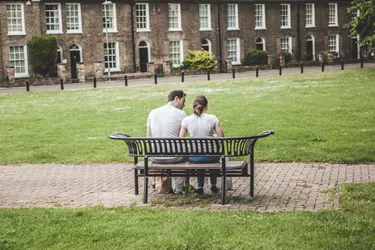
'It's not the right time for the moon' - staying present
Next, our instructor talked about the moon. When we see the moon in the sky at night, we wouldn't react by saying, 'Oh no, it's not the right time for the moon now.' Neither would we say 'Ah the moon, I love the moon, I wish it was here more often.' The moon just is. If we say anything, it would be 'Oh, there's the moon.'
An interesting parallel was made here with our mind and how we react to events. We have a tendency, once we have become aware of an experience, to either chase after it (attraction) or to try and avoid it (avoidance). These can all start the rumination spiral as they involve a judgement about the type of event (pleasant, neutral or unpleasant) and then further thoughts. These can be either something like, 'I hate this, I need to stop feeling like this, I can't feel like this now' or 'this feels great, why don't I feel like this all the time, I wish I did.'
We end up not being able to separate the initial experience from our judgement and thoughts about them. Staying present aims to take away judgement or expectation about events by neither becoming too attached to them, nor attempting to avoid them, but just experiencing the event as it is in the moment - 'there's the moon' or 'here is that sensation of feeling fat I sometimes get'.
The territory of depression
A further way of helping us get our heads around this section of the course was the next part of the session. This felt more like a basic education about depression, to help people recognise the territory of the illness and to see it as a whole. We were given a list of negative automatic thoughts that often appear in depressed people. Some of the examples that I recognised were;
- 'I feel I'm no good'
- 'My life is not going the way I want it to'
- 'I'm so disappointed in myself'
- 'What's wrong with me?'
- 'Something has to change'.
I'm sure you can come up with lots more. Part of the point of looking at this list was to see these thoughts as a much a part of depression as more physical symptoms such as fatigue or loss of appetite. It's too easy to see feelings of worthlessness or other automatic thoughts like this as a personality failing rather than a symptom of depression.
Another point was to help us recognise the enemy. Mindfulness is helping us to become more aware of our minds and what they are doing. So when we become aware of these thoughts appearing, instead of believing them and spiralling into further thoughts and rumination, we can just identify them for what they are - 'there's that thought about something being wrong with me again' - and perhaps take a breathing space to reconnect us with what is actually going on in the moment. This way we move away from acting as if they are true.
A radical new relationship
As we came to the end of the midway point of the course we were still also regularly practicing the body scan and longer meditations. We were learning to be more aware, to stay in the present rather than trying to avoid or becoming more attached to sensations. We were learning to ask questions of ourselves - 'How are things right now?', 'What is going on in my mind right now?', 'What is going on in my body?' Next session we would be introduced to what was described as a radical new way of relating to unwanted experience.
Clare writes her own blog on mental health, relationships and online youth support. You can follow her on twitter@fostress.
Read more from Clare's mindfulness series:


Information and support
When you’re living with a mental health problem, or supporting someone who is, having access to the right information - about a condition, treatment options, or practical issues - is vital. Visit our information pages to find out more.
Share your story with others
Blogs and stories can show that people with mental health problems are cared about, understood and listened to. We can use it to challenge the status quo and change attitudes.











